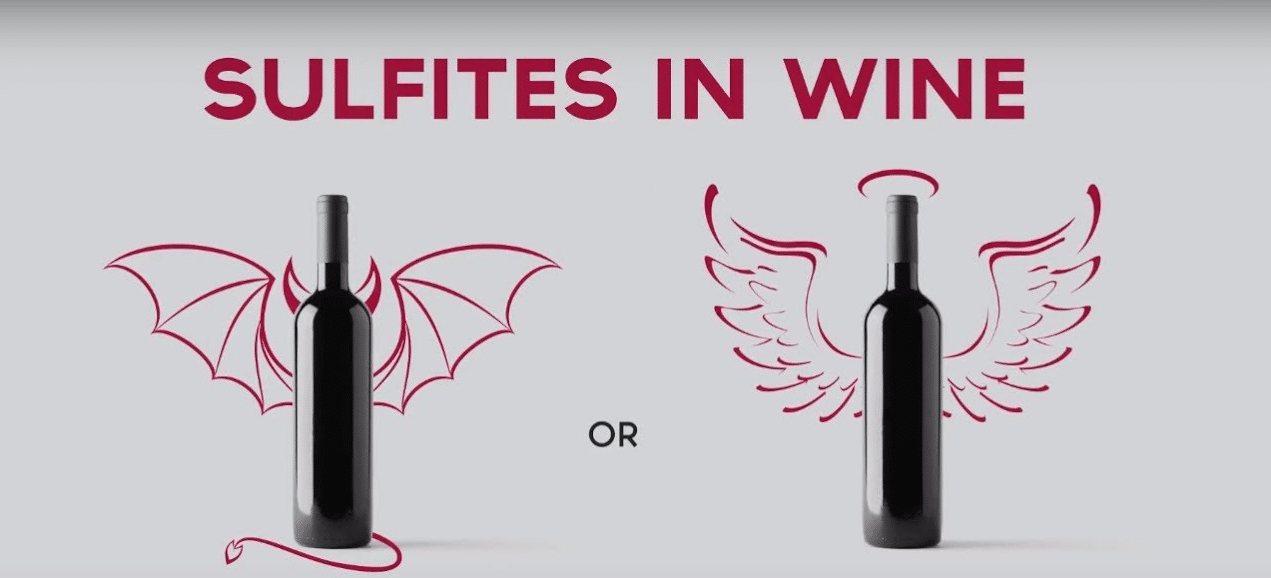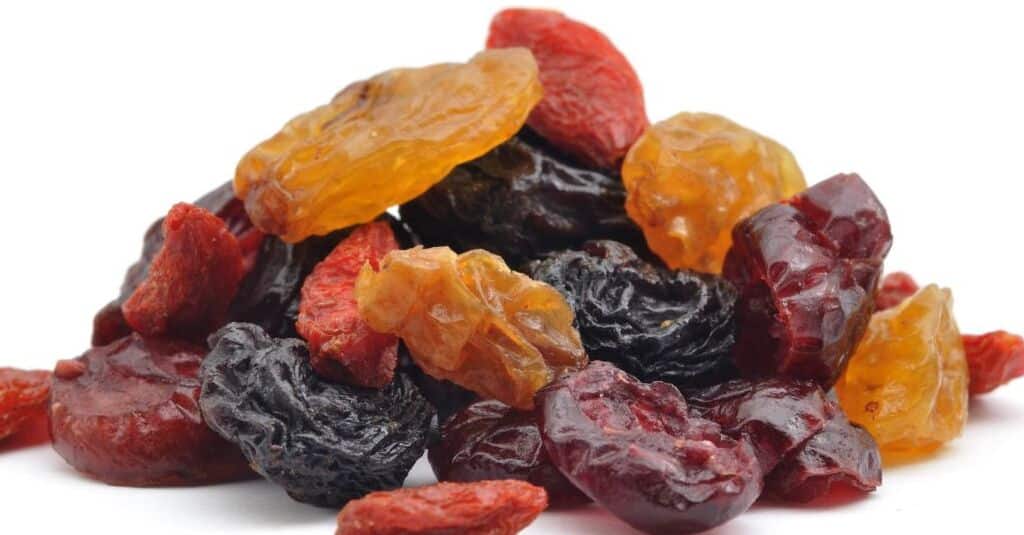[VIDEO] Sulfites in Wine: Do They Cause Headache or Not?
The sulfites in wine debate is undoubtedly one of the most frequently misunderstood subjects today. With the surge in demand for organic and natural wines, the conversation surrounding sulfite use (or lack thereof) has become increasingly prominent. In this article, we will answer some of the most common questions about sulfites in wine and list the top 5 low-sulfite Croatian wines!

Regardless of which side of the debate one falls on, it’s clear that sulfites are a hot topic that needs to be handled well and from both sides. As such, consumers need to be informed about the use of sulfites and understand their potential impact on their wine-drinking experience.
The truth about sulfites used in winemaking

Have you ever heard of sulfite? It’s another term for sulfur dioxide or SO2 – a mighty antioxidant and antibacterial crucial in keeping wine fresh and protected.
In wine production, sulfite helps prevent spoilage, maintain freshness, and inhibit the growth of harmful bacteria. It protects wine from developing so-called faults: volatile acidity, oxidations, mousiness, Brettanomyces, etc., and preserves flavors and characteristics in wine for months and years until you reach for the bottle. Some winemakers also opt to use higher doses of sulfites to stop fermentation early and eliminate unwanted yeasts.
Modern winemaking relies on using sulfite in strictly defined levels and occasions. Besides “Contains Sulfites,” wine could have many other additives that aren’t required to be stated on the wine label. The sulfites do – which is maybe why they seem to be so misunderstood, causing wine drinkers a hard time deciding whether it is a good or a bad compound in wine.
Modern winemaking techniques often involve using sulfites to eliminate bacteria at key points throughout the winemaking process. These stages include:
- when grapes are initially harvested and brought to the winery,
- during the fermentation process,
- when the wine is transferred between vessels in the cellar,
- and when the wine is bottled,
- sulfites are also used to sterilize the equipment, ensuring the wine remains free of unwanted bacteria.
What is the legal limit for adding sulfites to wine?
The maximum level of usage is legally defined, and for the EU countries, the level in wines must not exceed 150 mg/l for red and 200 mg/ l for white and rose wines.
Wines made with residual sugar fall into a different category where maximum sulphur dioxide levels can be raised to 400 mg/l for some special styles of wine like:
- Sauternes,
- Tokaji Esencia, and
- Beerenauslese, among many others.
Of course, that doesn’t mean you’ll find the maximum amounts in your wine.
It is also widely used as an additive throughout the winemaking process – as grapes enter the winery, added to the must, during fermentation, after malolactic fermentation, at racking, and at bottling, but a few. Maximum levels are controlled and dependent on the country of production and limitations set by certification bodies (organic, biodynamic, etc.).
Sulphur dioxide and other sulfites are often present in processed food, like dried fruits, seasonings, mustard, and fruit juices, sometimes with 10 times higher maximum levels than in wine.

Do organic wines have sulfites?
Sulfites are a natural byproduct of fermentation when yeast and sugar combine to create CO2 and alcohol. This process also produces small amounts of sulfur dioxide. As a result, even organic and natural wines contain sulfites, albeit in minimal amounts. Sulfites in wine have been a topic of concern among consumers, particularly the sulfites added post-fermentation. These added sulfites are not naturally occurring and can range from approximately five to 40 parts per million. In contrast, sulfites generated from natural fermentation are present in minimal amounts. Some wines may contain up to 350 parts per million added sulfites, significantly higher than naturally occurring sulfites.
Sulfites are commonly added to wine as a preservative to keep its flavor intact and extend its shelf life. If sulfites are not added, wine spoils more quickly and loses its unique taste. As a result, the inclusion of sulfites is a crucial step in the production of wine. Additionally, regulations have been implemented to ensure that the sulfites added to wine are safe for consumption.
What is the difference between wines with sulfur and those without added sulfur?
One of the most notable differences between organic and conventional wines is their taste. Organic wines offer a unique depth, a range of flavors, and a refreshing and distinct color that differentiates them from wines containing chemicals, additives, and preservatives. Due to these differences, organic and natural wines have distinct characteristics that distinguish them from their conventional counterparts.
What is the meaning behind the “sulfite-free” and “contains sulfites” labels?
As we said, sulfites are naturally occurring in wine. Despite the “sulfite-free” and “contains sulfites” labels. The only correct definitions are “No added sulfites wine” or “Low sulfites wine”, everything else is false.
“Sulfite-free” means that the winemaker didn’t add more sulfites to the naturally occurring ones. “Contains sulfites” just means that sulfites were added to the naturally occurring sulfites.
What are the side effects of sulfites in wine?
Although most people can consume sulfites without any problems, some may experience discomfort such as stomach pain, headaches, hives, and swelling.
As a person that enjoys wines, you must think about what could be the side effect of this compound, so regulated that it needs to be clearly stated on the label (if the level is more than 10 mg/l).
Furthermore, people don’t realize that these sulfites they blame their wine hangovers on are used in many foods they eat daily. And they’re used for the same reasons; sulfites in food also act as preservatives, preventing them from going bad or losing color. Some of your favorite foods contain more sulfites than that allegedly “headache-inducing” bottle of wine.
For individuals who have a sensitivity to sulfites commonly found in food items like french fries, cured meats, cheese, and canned soup, it is advisable to switch to natural wines made without added sulfites can be an effective way to reduce their consumption and prevent any adverse effects.
There is a very low probability for “sulfite sensitivity” and allergic reactions that will, in most cases, show first while consuming food like dried fruit and juices that, for example, have significantly higher levels of sulfites than your normal glass of dry red wine. Other compounds of the wine, such as histamines and tannins, could encourage immune reactions too.
In legislation and practice, the tendency today is to use less and less Sulphur dioxide in wines. High hygiene standards in the winery, temperature-controlled processes in winemaking, and other activities that keep contact with oxygen, bacteria, and microbes to a minimum, help decrease sulfites.
On the other hand, without the moderate usage of preservation agents, there is a greater risk of wine being inconsistent and unstable. What we could look for on the wine label in the future is the exact amount of sulfites used.
Until then, it is noteworthy that numerous natural wines that do not contain added sulfites are currently available.
Enjoying your wine in the right way
If you aren’t experiencing any medical problems and intolerance to some components found in wines, don’t let the sulfite myths scare you away from enjoying them.
We could say alcohol in the wine is enjoyable, but without excessive consumption. Alcohol is responsible for dehydration, and to prevent headaches and hangovers when drinking your wine, be sure to drink water all along.
Since wine is an alcoholic beverage, you should remember that enjoying it means being careful about the volume. Experiencing wines has nothing to do with how many bottles you tried but with what you felt while and if you enjoyed it.
Food is a great companion to wine; generally, it reduces the absorption of alcohol into the body, so enjoy your wine with food, or at least not on an empty stomach.
Now, let’s uncover the top 5 low-sulfite Croatian wines!
The top 5 low-sulfite Croatian wines

“My wine is an organic matter. Chemistry has no access to my vineyard. The same with the cellar”, says Giorgio Clai, impassioned, self-taught Istrian winemaker.
He follows the principles of biodynamic viticulture, and wines are made from organic grapes without adding selected yeasts and with a minimum amount of sulphur. Wines for this white blend of Malvasia Istriana, Sauvignon Blanc, and Pinot Gris are produced traditionally, leaving the skins in contact with the must during the fermentation and aged in wooden barrels 15 months—aromas of lemon curd, acacia blossoms, caramel, and Clementine. The wine is gorgeously full and rich, orange and salty!
“I believe in wines that need more time and can develop nice secondary and tertiary aromas. There have been big changes towards modernity in Istria in all aspects, but you have to try to understand the grapes, the terroir and to find the truth. I want to discover the character of this land.”
This is the philosophy of Dimitri Brečević, the iconic name of natural wine production in Croatia. Dimitri Brečević practices a natural winemaking approach. Grapes are picked by hand and pressed into concrete tanks with no temperature control. All Piquentum wines complete a wild ferment with no added yeast or additives and are bottled unfiltered with minimal sulfur. This Malvasia Istriana is a mature and complex wine with pleasant minerality, soft and smooth texture, quince aroma, and floral components.
“The wine is created by nature, it is born in the vineyard, and the role of man is to deliver it like a baby and to raise it, put it on the right track” is the Tomac family winemaking motto.
They still preserve the traditional wine production style and are one of the few biodynamic Croatian wineries. In 2006 Tomac family adopted a philosophy of production of wine in amphorae. Amphorae were ordered from Georgia and buried in the ground, and in 2009 the first bottles of this wine were filled. This Riesling is a full-bodied wine with smooth tannins, pine resin, stone fruits, and a salty, aromatic profile held firmly by a Riesling backbone.
“I am the only winemaker (in Moslavina) using natural yeasts, no filtering or fining, and lots of manual work in the vineyard without systemic pesticides, herbicides, or artificial fertilizers.”
Ivan Kosovec is a young winemaker who always had a kinship with nature and translated this to the low intervention approach to his winemaking. Respecting the sincere philosophy of healthy and natural wines, his viticulture is based on a maximum ecological approach with dedicated work in the vineyards. Kosovec Škrlet, a native Moslavina variety, is a wine with good natural acidity, great balance, and high minerality in combination with a scent of meadow flowers, honey, lime tree, a hint of light spices, and citrus finish. Clean and fresh on the nose but soft and luxurious on the taste.
“Honestly, I try to do very little in the cellar. All the work is in the vineyards. If I do that work, the wine makes itself. The strength of our wines lies in their naturalness and negligible sulphur content in each bottle. The rest is easy!” says Denis from Križ winery.
Denis is a third-generation winemaker following only the methods and techniques of his forefathers most naturally while cultivating 60 years-old, very low-trained bush vines to protect the fruit from the sun. His work in the cellar is just as natural as his approach in the vineyard. He vinifies in old untoasted Slavonian oak barrels with long lees contact, focusing on purity and freshness. He aims to grow the healthiest low-yield Plavac Mali in the region and follow his intuition in the cellar.
Conclusion
“Are sulfites bad for me?” is the question many wine lovers ask before sipping their first glass. While it may seem there is something to be concerned about when you see the word “contains sulfites” on a bottle of wine, rest assured that naturally occurring sulfites are found in every single bottle.
Wine lovers may quickly blame sulfites for their occasional intolerance to the wine, but according to experts, sulfite intolerance is quite rare. Despite sulfites being present in all wines due to fermentation, the concentration rarely exceeds 20 parts per million, with added sulfites typically resulting in a concentration of up to 70 per million.
To put this into perspective, dried fruits often contain over 600 parts per million. Therefore, if someone can eat raisins without any issues but experiences a headache after drinking wine, sulfites are likely not the cause.
Ultimately, most winemakers agree that at least low-level sulfite addition is necessary to produce the best wine. The key is to use enough but not too much!
If you’re passionate about sustainability and love adding organic and natural wines to your collection, then we’ve got some exciting news for you!
We’ve carefully handpicked some delicious wines that are not only tasty but also produced in an environmentally friendly way.
Don’t miss out on our natural and organic wine offer, where you can enjoy top-quality wines while supporting biodiversity and small boutique winemakers. Check out our selection today and take the first step towards a more sustainable wine collection!



















